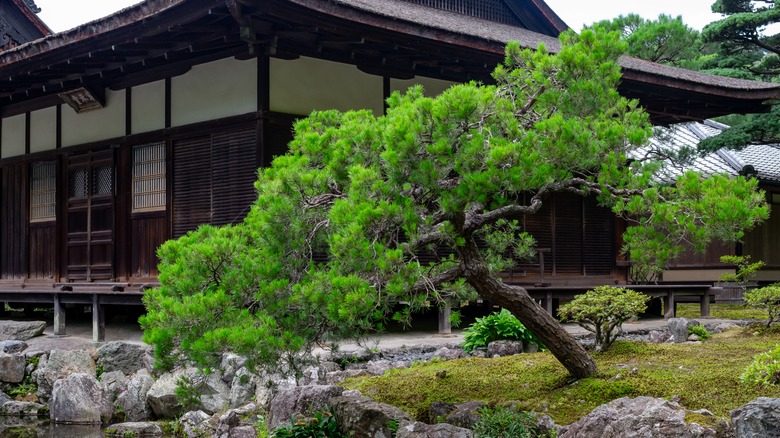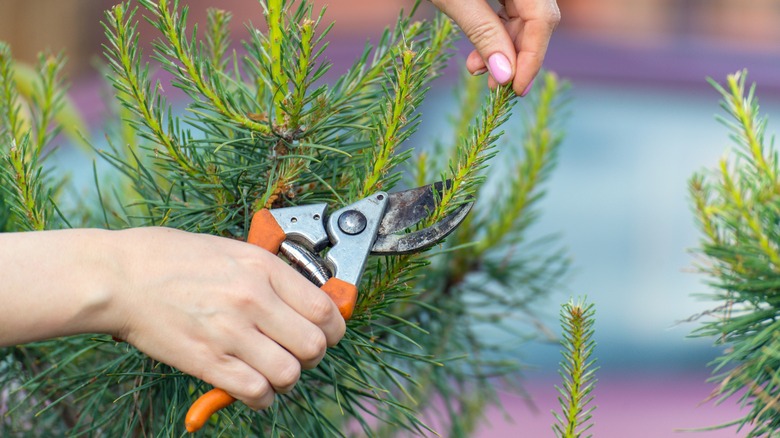Challenges To Consider Before Growing A Japanese Black Pine Tree
The Japanese black pine tree (Pinus thunbergii) is a popular evergreen in many parts of the eastern United States. It has an unusual twisting trunk that adds dimension to your landscaping plan, along with stunning dark green needles. The tree has capabilities of being either a dwarf tree that won't take over your yard or a towering 100-foot presence, and it does well in most soil, even sandy coastal areas. If you're in the USDA zones 5 to 8, the Japanese black pine is a hardy, easy-to-grow tree, that tends to be fairly problem-free when it's young. But, at maturity (about 20 years), it begins a rapid decline as it becomes susceptible to serious fungal diseases and destructive pests. Besides being a tree that has a short life compared to other types, it has a few other downsides as a young evergreen.
It can become spindly, with low-hanging branches that block your yard. The Japanese black pine can be a very messy tree when it sheds its large pine needles, which can be made worse by exposure to too much water, which makes the needles turn yellow and drop at an even faster rate. Finally, the Japanese black pine tree is considered an invasive species in Delaware and has been targeted for banning in Massachusetts. While it may not be on the banned list in some states, an invasive species of any kind disrupts the delicate eco balance in natural environments.
Common problems you can experience with a Japanese black pine tree
How can you work around the pitfalls of the Japanese black pine tree? You'll need to prune your tree each year if you want to keep it from blocking and cutting off entire areas of your yard, like paths or walkways. The best method for pruning your pine trees involves pruning in the fall. Regular pruning also helps to shape the tree, forming a stronger structure.
If you are set on having a Japanese black pine, and can grow it to maturity, you'll still have problems waiting for you. You need to be on the lookout for diseases and pests, which hasten the tree's demise. Some of the diseases and pests affecting a Japanese Black Pine are fungus, blight, rust, and cankers, along with pinewood nematodes, caterpillars, sawflies, borers, and weevils. Having an 80-foot dead tree in your yard becomes enormously expensive to remove, or even worse, can become a serious hazard to your home and safety during a weather event that includes strong winds. A good arborist can help you identify problems before its too late. Considering the downsides of this species of pine, with the wild foliage and messy needles and cones, you may want to consider another type of tall pine tree for your yard.

